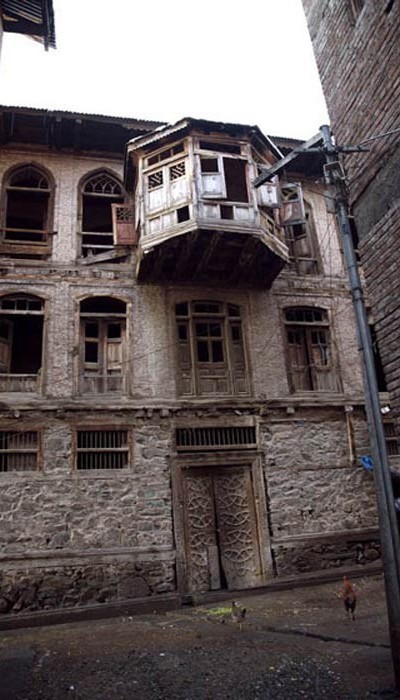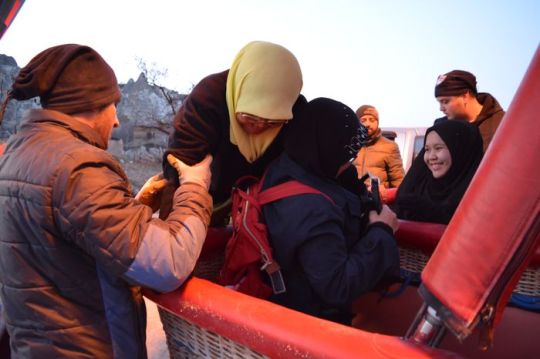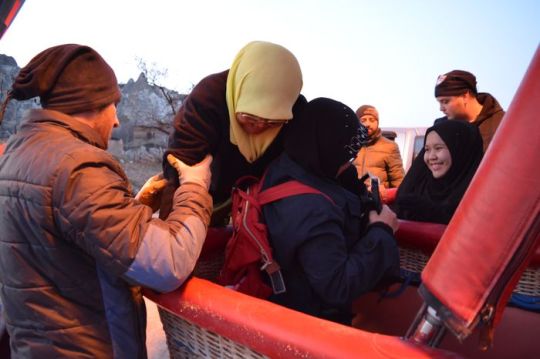#economic turmoil
Text

#us politics#republicans#conservatives#donald trump#gop#trump administration#economics#economy#unemployment rate#tax breaks#public debt#health insurance#gun production#culture wars#corporate profits#economic turmoil#2024 elections#memes
34 notes
·
View notes
Text
Not sure how I feel about the fact that Hunt's Autumn Statement that *checks notes* is supposedly going to fix Liz Truss & Co's Mini Budget hole which never truly existed, is about to bring the UK economy to a grinding halt.
In fact, I do know how to feel:
Livid.
Don't take my word for it. The amount of damage it'll do to our fiscal stability is both a fascinating and terrifying research project...
#government#tories#autumn statement#economic turmoil#great british problems#general election now#british politics#sleazy sunak#Sick of austerity
2 notes
·
View notes
Text
Wow so history really does just run on a 100-year cycle huh. We humans are doomed to make the same mistakes for the rest of time
#first the pandemic#now the titanic#now a coup in Russia????#can history just chill for like a year or two?#how did I forget about all the economic turmoil lol#russia#titanic#oceangate#stock market
11K notes
·
View notes
Text

this zionist cuck is always getting bodied on his own show lmaooo
#Lebanon's economic struggles#American politics#Middle East turmoil#geopolitical interference#Lebanon#impoverished#struggling country#American invasion#interference#Taliban#Middle East#American interference
149 notes
·
View notes
Note
Oh no, not you guys too, why is EVERYTHING about politics now?!
Sometimes people who are affected by bad politics make jokes about it to cope
#not an idea#our country is in turmoil the government's economic plan has 180d multiple times in the last 2 months alone#but god forbid we joke about the fact our last pm lasted 44 days
268 notes
·
View notes
Text
how ya’ll dealing with the queen going kaput? me and my family are all very upset because the horrible histories monarch song is no longer accurate
#also. on a genuine note. I am concerned about the economic turmoil this all may cause#and the horrendous amount of money that will soon be spent on funerals and coronations despite us being in a financial crisis#and the effect on public spirit especially in the older generations who have more trust and respect for the queen as a figure#not me tho <3 i hated lizzy#txt
12 notes
·
View notes
Text
An Existential Crisis For The Forsaken Non-Migrant Kashmiri Pandits
The author explores the plight of non-migrant Kashmiri Pandits enduring political turmoil and conflict in Kashmir. Despite legal battles for employment opportunities, corruption diverts resources and the Indian government’s indifference and failure to provide security exacerbates their challenges in securing basic necessities while amplifying their vulnerability. Pandits face pressure to conform…

View On WordPress
#Armed Conflict#Economic Disempowerment#Economic Distress#Employment Opportunities#Jammu and Kashmir#Kapda#Kashmir Pandits in Kashmir#Kashmir Valley#Kashmiri Hindus#Kashmiri Pandit Sangarsh Samiti#KPSS#Makaan#Marginalised Religious Minority#Non-migrant Kashmiri Pandits#political disempowerment#Political turmoil#Roti#Sanjay Tickoo
0 notes
Photo

Economic Crisis and Political Turmoil (1996-1997)
Tragedy Strikes with Loukanov’s Assassination
By the end of 1996, Bulgaria faced a severe economic and financial crisis. On October 2nd, a tragic event unfolded when the key figure behind the perestroika, former Prime Minister Loukanov, fell victim to a brutal shooting by Russian assailants in front of his home. Faced with mounting pressure, Prime Minister Zhan Videnov announced his intention to resign. The opposition, led by Ivan Rostov of the Union of Democratic Forces (UDF), regrouped, and in the November 1996 presidential elections, the “blue” candidate Petar Stoyanov emerged victorious. The only remaining hope for the country was to urgently initiate negotiations with international financial institutions for the implementation of a currency board as the sole solution to rescue Bulgaria.
1997 – A Year of Protests and Political Shifts
The arrival of the new year, 1997, was marked by impromptu barricades in the streets and widespread protests against the ruling “red” government. Opposition forces intensified their efforts, and the capital saw daily political processions, with university students actively participating. In the freezing temperatures, students jumped in place to keep warm, chanting, “Who doesn’t jump is ‘red’!” The culmination of the street protests occurred on the night of January 11th when extremists stormed the Parliament building, causing damage. Rumors circulated that these protests were manipulated and financed from abroad. Faced with increasing public pressure and the threat of bloodshed, the Bulgarian Socialist Party (BSP) conceded, and UDF’s demand for pre-term elections was accepted Guided Turkey Tours .
Transition to a New Government
On February 4th, 1997, the BSP returned the mandate for forming a consecutive government to President Petar Stoyanov. The Parliament was dissolved, and a provisional cabinet was empowered to engage in negotiations and reach agreements with international financial institutions. This marked a significant turning point, as Bulgaria prepared for pre-term elections and sought solutions to its economic and political challenges.
0 notes
Photo

Economic Crisis and Political Turmoil (1996-1997)
Tragedy Strikes with Loukanov’s Assassination
By the end of 1996, Bulgaria faced a severe economic and financial crisis. On October 2nd, a tragic event unfolded when the key figure behind the perestroika, former Prime Minister Loukanov, fell victim to a brutal shooting by Russian assailants in front of his home. Faced with mounting pressure, Prime Minister Zhan Videnov announced his intention to resign. The opposition, led by Ivan Rostov of the Union of Democratic Forces (UDF), regrouped, and in the November 1996 presidential elections, the “blue” candidate Petar Stoyanov emerged victorious. The only remaining hope for the country was to urgently initiate negotiations with international financial institutions for the implementation of a currency board as the sole solution to rescue Bulgaria.
1997 – A Year of Protests and Political Shifts
The arrival of the new year, 1997, was marked by impromptu barricades in the streets and widespread protests against the ruling “red” government. Opposition forces intensified their efforts, and the capital saw daily political processions, with university students actively participating. In the freezing temperatures, students jumped in place to keep warm, chanting, “Who doesn’t jump is ‘red’!” The culmination of the street protests occurred on the night of January 11th when extremists stormed the Parliament building, causing damage. Rumors circulated that these protests were manipulated and financed from abroad. Faced with increasing public pressure and the threat of bloodshed, the Bulgarian Socialist Party (BSP) conceded, and UDF’s demand for pre-term elections was accepted Guided Turkey Tours .
Transition to a New Government
On February 4th, 1997, the BSP returned the mandate for forming a consecutive government to President Petar Stoyanov. The Parliament was dissolved, and a provisional cabinet was empowered to engage in negotiations and reach agreements with international financial institutions. This marked a significant turning point, as Bulgaria prepared for pre-term elections and sought solutions to its economic and political challenges.
0 notes
Photo

Economic Crisis and Political Turmoil (1996-1997)
Tragedy Strikes with Loukanov’s Assassination
By the end of 1996, Bulgaria faced a severe economic and financial crisis. On October 2nd, a tragic event unfolded when the key figure behind the perestroika, former Prime Minister Loukanov, fell victim to a brutal shooting by Russian assailants in front of his home. Faced with mounting pressure, Prime Minister Zhan Videnov announced his intention to resign. The opposition, led by Ivan Rostov of the Union of Democratic Forces (UDF), regrouped, and in the November 1996 presidential elections, the “blue” candidate Petar Stoyanov emerged victorious. The only remaining hope for the country was to urgently initiate negotiations with international financial institutions for the implementation of a currency board as the sole solution to rescue Bulgaria.
1997 – A Year of Protests and Political Shifts
The arrival of the new year, 1997, was marked by impromptu barricades in the streets and widespread protests against the ruling “red” government. Opposition forces intensified their efforts, and the capital saw daily political processions, with university students actively participating. In the freezing temperatures, students jumped in place to keep warm, chanting, “Who doesn’t jump is ‘red’!” The culmination of the street protests occurred on the night of January 11th when extremists stormed the Parliament building, causing damage. Rumors circulated that these protests were manipulated and financed from abroad. Faced with increasing public pressure and the threat of bloodshed, the Bulgarian Socialist Party (BSP) conceded, and UDF’s demand for pre-term elections was accepted Guided Turkey Tours .
Transition to a New Government
On February 4th, 1997, the BSP returned the mandate for forming a consecutive government to President Petar Stoyanov. The Parliament was dissolved, and a provisional cabinet was empowered to engage in negotiations and reach agreements with international financial institutions. This marked a significant turning point, as Bulgaria prepared for pre-term elections and sought solutions to its economic and political challenges.
0 notes
Photo

Economic Crisis and Political Turmoil (1996-1997)
Tragedy Strikes with Loukanov’s Assassination
By the end of 1996, Bulgaria faced a severe economic and financial crisis. On October 2nd, a tragic event unfolded when the key figure behind the perestroika, former Prime Minister Loukanov, fell victim to a brutal shooting by Russian assailants in front of his home. Faced with mounting pressure, Prime Minister Zhan Videnov announced his intention to resign. The opposition, led by Ivan Rostov of the Union of Democratic Forces (UDF), regrouped, and in the November 1996 presidential elections, the “blue” candidate Petar Stoyanov emerged victorious. The only remaining hope for the country was to urgently initiate negotiations with international financial institutions for the implementation of a currency board as the sole solution to rescue Bulgaria.
1997 – A Year of Protests and Political Shifts
The arrival of the new year, 1997, was marked by impromptu barricades in the streets and widespread protests against the ruling “red” government. Opposition forces intensified their efforts, and the capital saw daily political processions, with university students actively participating. In the freezing temperatures, students jumped in place to keep warm, chanting, “Who doesn’t jump is ‘red’!” The culmination of the street protests occurred on the night of January 11th when extremists stormed the Parliament building, causing damage. Rumors circulated that these protests were manipulated and financed from abroad. Faced with increasing public pressure and the threat of bloodshed, the Bulgarian Socialist Party (BSP) conceded, and UDF’s demand for pre-term elections was accepted Guided Turkey Tours .
Transition to a New Government
On February 4th, 1997, the BSP returned the mandate for forming a consecutive government to President Petar Stoyanov. The Parliament was dissolved, and a provisional cabinet was empowered to engage in negotiations and reach agreements with international financial institutions. This marked a significant turning point, as Bulgaria prepared for pre-term elections and sought solutions to its economic and political challenges.
0 notes
Photo

Economic Crisis and Political Turmoil (1996-1997)
Tragedy Strikes with Loukanov’s Assassination
By the end of 1996, Bulgaria faced a severe economic and financial crisis. On October 2nd, a tragic event unfolded when the key figure behind the perestroika, former Prime Minister Loukanov, fell victim to a brutal shooting by Russian assailants in front of his home. Faced with mounting pressure, Prime Minister Zhan Videnov announced his intention to resign. The opposition, led by Ivan Rostov of the Union of Democratic Forces (UDF), regrouped, and in the November 1996 presidential elections, the “blue” candidate Petar Stoyanov emerged victorious. The only remaining hope for the country was to urgently initiate negotiations with international financial institutions for the implementation of a currency board as the sole solution to rescue Bulgaria.
1997 – A Year of Protests and Political Shifts
The arrival of the new year, 1997, was marked by impromptu barricades in the streets and widespread protests against the ruling “red” government. Opposition forces intensified their efforts, and the capital saw daily political processions, with university students actively participating. In the freezing temperatures, students jumped in place to keep warm, chanting, “Who doesn’t jump is ‘red’!” The culmination of the street protests occurred on the night of January 11th when extremists stormed the Parliament building, causing damage. Rumors circulated that these protests were manipulated and financed from abroad. Faced with increasing public pressure and the threat of bloodshed, the Bulgarian Socialist Party (BSP) conceded, and UDF’s demand for pre-term elections was accepted Guided Turkey Tours .
Transition to a New Government
On February 4th, 1997, the BSP returned the mandate for forming a consecutive government to President Petar Stoyanov. The Parliament was dissolved, and a provisional cabinet was empowered to engage in negotiations and reach agreements with international financial institutions. This marked a significant turning point, as Bulgaria prepared for pre-term elections and sought solutions to its economic and political challenges.
0 notes
Photo

Economic Crisis and Political Turmoil (1996-1997)
Tragedy Strikes with Loukanov’s Assassination
By the end of 1996, Bulgaria faced a severe economic and financial crisis. On October 2nd, a tragic event unfolded when the key figure behind the perestroika, former Prime Minister Loukanov, fell victim to a brutal shooting by Russian assailants in front of his home. Faced with mounting pressure, Prime Minister Zhan Videnov announced his intention to resign. The opposition, led by Ivan Rostov of the Union of Democratic Forces (UDF), regrouped, and in the November 1996 presidential elections, the “blue” candidate Petar Stoyanov emerged victorious. The only remaining hope for the country was to urgently initiate negotiations with international financial institutions for the implementation of a currency board as the sole solution to rescue Bulgaria.
1997 – A Year of Protests and Political Shifts
The arrival of the new year, 1997, was marked by impromptu barricades in the streets and widespread protests against the ruling “red” government. Opposition forces intensified their efforts, and the capital saw daily political processions, with university students actively participating. In the freezing temperatures, students jumped in place to keep warm, chanting, “Who doesn’t jump is ‘red’!” The culmination of the street protests occurred on the night of January 11th when extremists stormed the Parliament building, causing damage. Rumors circulated that these protests were manipulated and financed from abroad. Faced with increasing public pressure and the threat of bloodshed, the Bulgarian Socialist Party (BSP) conceded, and UDF’s demand for pre-term elections was accepted Guided Turkey Tours .
Transition to a New Government
On February 4th, 1997, the BSP returned the mandate for forming a consecutive government to President Petar Stoyanov. The Parliament was dissolved, and a provisional cabinet was empowered to engage in negotiations and reach agreements with international financial institutions. This marked a significant turning point, as Bulgaria prepared for pre-term elections and sought solutions to its economic and political challenges.
0 notes
Photo

Economic Crisis and Political Turmoil (1996-1997)
Tragedy Strikes with Loukanov’s Assassination
By the end of 1996, Bulgaria faced a severe economic and financial crisis. On October 2nd, a tragic event unfolded when the key figure behind the perestroika, former Prime Minister Loukanov, fell victim to a brutal shooting by Russian assailants in front of his home. Faced with mounting pressure, Prime Minister Zhan Videnov announced his intention to resign. The opposition, led by Ivan Rostov of the Union of Democratic Forces (UDF), regrouped, and in the November 1996 presidential elections, the “blue” candidate Petar Stoyanov emerged victorious. The only remaining hope for the country was to urgently initiate negotiations with international financial institutions for the implementation of a currency board as the sole solution to rescue Bulgaria.
1997 – A Year of Protests and Political Shifts
The arrival of the new year, 1997, was marked by impromptu barricades in the streets and widespread protests against the ruling “red” government. Opposition forces intensified their efforts, and the capital saw daily political processions, with university students actively participating. In the freezing temperatures, students jumped in place to keep warm, chanting, “Who doesn’t jump is ‘red’!” The culmination of the street protests occurred on the night of January 11th when extremists stormed the Parliament building, causing damage. Rumors circulated that these protests were manipulated and financed from abroad. Faced with increasing public pressure and the threat of bloodshed, the Bulgarian Socialist Party (BSP) conceded, and UDF’s demand for pre-term elections was accepted Guided Turkey Tours .
Transition to a New Government
On February 4th, 1997, the BSP returned the mandate for forming a consecutive government to President Petar Stoyanov. The Parliament was dissolved, and a provisional cabinet was empowered to engage in negotiations and reach agreements with international financial institutions. This marked a significant turning point, as Bulgaria prepared for pre-term elections and sought solutions to its economic and political challenges.
0 notes
Photo

Economic Crisis and Political Turmoil (1996-1997)
Tragedy Strikes with Loukanov’s Assassination
By the end of 1996, Bulgaria faced a severe economic and financial crisis. On October 2nd, a tragic event unfolded when the key figure behind the perestroika, former Prime Minister Loukanov, fell victim to a brutal shooting by Russian assailants in front of his home. Faced with mounting pressure, Prime Minister Zhan Videnov announced his intention to resign. The opposition, led by Ivan Rostov of the Union of Democratic Forces (UDF), regrouped, and in the November 1996 presidential elections, the “blue” candidate Petar Stoyanov emerged victorious. The only remaining hope for the country was to urgently initiate negotiations with international financial institutions for the implementation of a currency board as the sole solution to rescue Bulgaria.
1997 – A Year of Protests and Political Shifts
The arrival of the new year, 1997, was marked by impromptu barricades in the streets and widespread protests against the ruling “red” government. Opposition forces intensified their efforts, and the capital saw daily political processions, with university students actively participating. In the freezing temperatures, students jumped in place to keep warm, chanting, “Who doesn’t jump is ‘red’!” The culmination of the street protests occurred on the night of January 11th when extremists stormed the Parliament building, causing damage. Rumors circulated that these protests were manipulated and financed from abroad. Faced with increasing public pressure and the threat of bloodshed, the Bulgarian Socialist Party (BSP) conceded, and UDF’s demand for pre-term elections was accepted Guided Turkey Tours .
Transition to a New Government
On February 4th, 1997, the BSP returned the mandate for forming a consecutive government to President Petar Stoyanov. The Parliament was dissolved, and a provisional cabinet was empowered to engage in negotiations and reach agreements with international financial institutions. This marked a significant turning point, as Bulgaria prepared for pre-term elections and sought solutions to its economic and political challenges.
0 notes
Photo

Economic Crisis and Political Turmoil (1996-1997)
Tragedy Strikes with Loukanov’s Assassination
By the end of 1996, Bulgaria faced a severe economic and financial crisis. On October 2nd, a tragic event unfolded when the key figure behind the perestroika, former Prime Minister Loukanov, fell victim to a brutal shooting by Russian assailants in front of his home. Faced with mounting pressure, Prime Minister Zhan Videnov announced his intention to resign. The opposition, led by Ivan Rostov of the Union of Democratic Forces (UDF), regrouped, and in the November 1996 presidential elections, the “blue” candidate Petar Stoyanov emerged victorious. The only remaining hope for the country was to urgently initiate negotiations with international financial institutions for the implementation of a currency board as the sole solution to rescue Bulgaria.
1997 – A Year of Protests and Political Shifts
The arrival of the new year, 1997, was marked by impromptu barricades in the streets and widespread protests against the ruling “red” government. Opposition forces intensified their efforts, and the capital saw daily political processions, with university students actively participating. In the freezing temperatures, students jumped in place to keep warm, chanting, “Who doesn’t jump is ‘red’!” The culmination of the street protests occurred on the night of January 11th when extremists stormed the Parliament building, causing damage. Rumors circulated that these protests were manipulated and financed from abroad. Faced with increasing public pressure and the threat of bloodshed, the Bulgarian Socialist Party (BSP) conceded, and UDF’s demand for pre-term elections was accepted Guided Turkey Tours .
Transition to a New Government
On February 4th, 1997, the BSP returned the mandate for forming a consecutive government to President Petar Stoyanov. The Parliament was dissolved, and a provisional cabinet was empowered to engage in negotiations and reach agreements with international financial institutions. This marked a significant turning point, as Bulgaria prepared for pre-term elections and sought solutions to its economic and political challenges.
0 notes